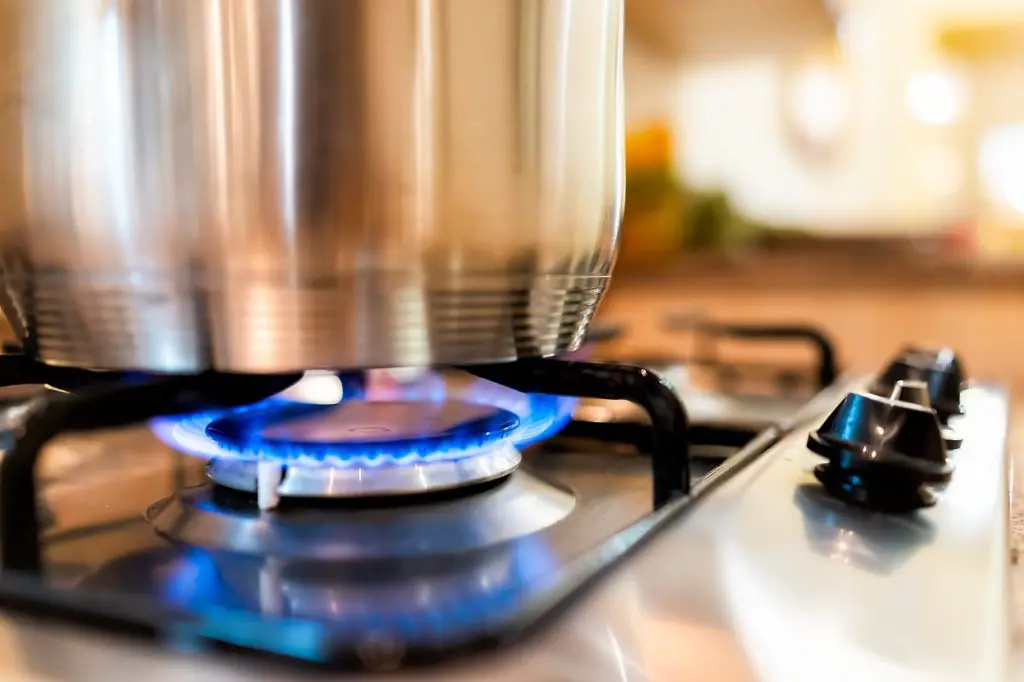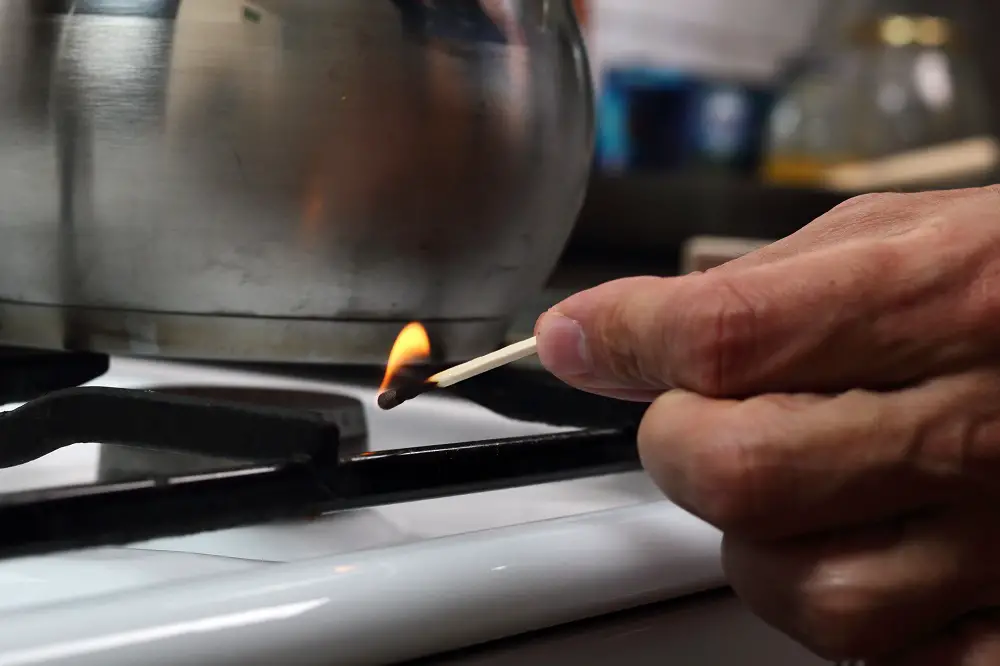
Learning how to use a gas stove for the first time can be a little overwhelming. Fortunately, most modern gas stoves now have an electric igniter that will make switching on your stove a breeze.
One of the biggest benefits of using a gas stove is that it will still continue to work even if your electricity goes out. Even with an electric ignition, should you lose power all you have to do is light the stove using a match or lighter.
There are many reasons why people choose to use gas stoves instead of electric. One of the biggest reasons is that they offer improved control over temperatures, in addition to flame intensity. They also provide even heating across cookware. If you’re new to gas stove use, then read on to learn some great tips and tricks on how to use your new range.
Table of Contents
Cookware Requirements
When you purchase a gas stove, you may also need to upgrade your cookware. The best cookware for gas stove use should distribute and conduct heat evenly. The cookware must also be able to respond to temperature changes quickly.
Ease of Use
If you’re used to using an electric stove for all of your cooking needs, then you may be unsure how to go about cooking with your new gas range. Fortunately, these ranges are just as easy to use as electric stoves.
The biggest difference you will come across involves igniting the stove and adjusting the heat. Depending on the make and model of gas stove you have, you may need to ignite a burner using a separate igniter or simply use knobs that come equipped with igniters.
Lighting the Burner
If the stove you have features a separate igniter, then you will need to push the igniter in using one hand while using your other hand to turn the corresponding knob to the burner you want to use. Igniters are powered by electricity and will create a spark that will catch the gas and ignite the flame.
As you’re igniting the burner, you’ll hear a loud clicking noise which indicates that the burner is sparking. Next, you will turn the knob to open up the gas line. Once the gas collides with the spark a flame will appear.
As you adjust the knob, you will notice that it controls the height of the flame. A lower flame equals less heat, while a high flame equals more heat. Turning the knob all the way back towards the starting position will turn the gas off completely, which immediately extinguishes the flame.
Built-in Ignitors
Models of gas stoves can also come equipped with built-in igniters. As you turn a knob, you will hear clicking, which will tell you the ignition is firing. Turn the knob until the flame appears and the clicking sound stops.
Usually, the flames start high, so you’ll need to continue to turn the knob in order to achieve a lower flame. This may seem counterintuitive when you use the stove for the first time, but you’ll quickly get the hang of it.
Using a Match

Should your electricity go out you can still continue to use your gas stove even if the igniters on the stove use electricity. Instead of using the igniters, you’ll use a lighter or match. To light your stove safely this way, I recommend having the flame lit before you switch on the gas.
Doing so can prevent you from leaving the gas on long enough to create a cloud of gas that will burst into flames once you strike the match. Using a long lighter or match, place the flame near the burner.
Next, turn the burner knob in order to allow gas to come up to the appropriate burner. A blue flame will immediately pop up. Put out the lighter or match and adjust the knob in order to control the height of the flame.
Turning off the flame is the same as usual, simply return the knob to the start position. This shuts off the gas flow to the burner.
Safety
Cooking can get messy regardless of how hard you try to keep your range clean. Food will spill, drip, and splatter during the cooking process. With a gas stove, you’re leaving yourself with a potentially dangerous situation if you overlook the mess or put off cleaning it, thinking that the next cook will burn it off.
Leftover debris on a gas range can catch fire the next time you ignite your burner. Because of this, it’s very important that you clean your stove after each use. Always keep in mind that you’re cooking with an open flame.
When you’re cooking on an electric range and you accidentally place something on the burner it will be affected by the heat first before a fire breaks out. But when you place something accidentally on a gas range, you’re placing something on an open flame.
This means anything that comes into direct contact with the flame can be lit on fire. Always keep oven mitts and kitchen towels away from your stove during use. Additionally, make sure that you avoid wearing loose clothing and always tie your hair back before you start cooking.
Baking
Gas ovens are notorious for uneven heating. Many cooks have found that their food tends to cook faster on one side unless the oven comes equipped with a convection fan. In order to prevent undercooking or overcooking your food, make sure you rotate the pans during the baking process, which will promote even baking.
Cooking Efficiency
Boiling a pot of water boil on an electric stove can take a long time. But with a gas stove, it’s much different. In fact, gas stoves heat up much faster than electric stoves. But why? An electric stove must heat the burner first.
The burner then heats your pan, then eventually the food. With a gas stove, the flame is the source of the heat. Because of this, you don’t have to wait for the burner to get hot before it starts heating the pot. Instead, the pan well instantly feel the heat. This type of cooking speed and efficiency is a huge selling point for busy families.
If you want to take advantage of the gas stove’s faster cooking speed, click here to read my article on 10 simple and quick cooking tips for busy moms, for some great meal ideas you can try when you’re short on time.
Gas Stove Cooking Tips
- Cooking with gas is pretty simple and straightforward, however, there are some things you should know, such as how to use your stove safely. You may have a propane stove or a natural gas stove. Most gas ranges can handle both types of gas or the stove you have will come with a conversion kit that will allow you to make the switch. There’s no real difference between these two types of gases, it’s basically just a matter of convenience and personal preference.
- If you’re used to cooking with an electric stove, then you’re probably used to the burner continuing to cook the food even though you’ve just shut it off. But with a gas stove, it’s much different. With a gas stove burner, it will not continue to keep the food warm or cook it as an electric stove will. This can be a pro or con depending on the cook’s personal preference.
- Learning how to simmer food on a gas stove can take some practice since you’re probably not used to controlling the flame. You’ll quickly find that when you try to lower the temperature by adjusting the flame, that the temperature is still too high, but when you turn the flame lower it will go out.
This will cause you to continue to relight the burner until you achieve the right temperature. However, with a little practice, you’ll find that gas stoves give you more precise control over the temperature. You’ll also find that if a recipe calls for you to cook a dish on high heat that you’ll want to switch the temperature to a medium height flame instead. Many recipes have electric ranges in mind when they recommend a heat setting. - For safety purposes, it’s very important to know what propane and natural gas smell like. Gas leaks are very rare but they’re still possible. You need to be able to recognize the smell of gas immediately.
Final Thoughts
Now that you know how to use a gas stove safely, and more efficiently, you can get started whipping up your favorite meals. Remember, gas stoves can cook food faster than electric ranges, so you’ll need to take this into account and adjust cooking times accordingly.
Taking the proper safety precautions when you’re cooking will also be important. Over time, you’ll get the hang of adjusting the height of the flame, accordingly, based on the dish you’re preparing. In the meantime, make only small turns of the knob when adjusting the height of the flame in order to prevent overcooking your food.
Originally posted 2020-05-17 11:03:59.


![7 Best Island Punch Pucker Substitutes [ALMOST Identical]](https://wowcookery.com/wp-content/uploads/2022/05/island-punch-pucker-90x75.jpg)
![10 BEST Luxardo Bitter Bianco Substitutes [ALMOST Identical]](https://wowcookery.com/wp-content/uploads/2022/05/luxardo-90x75.jpg)






